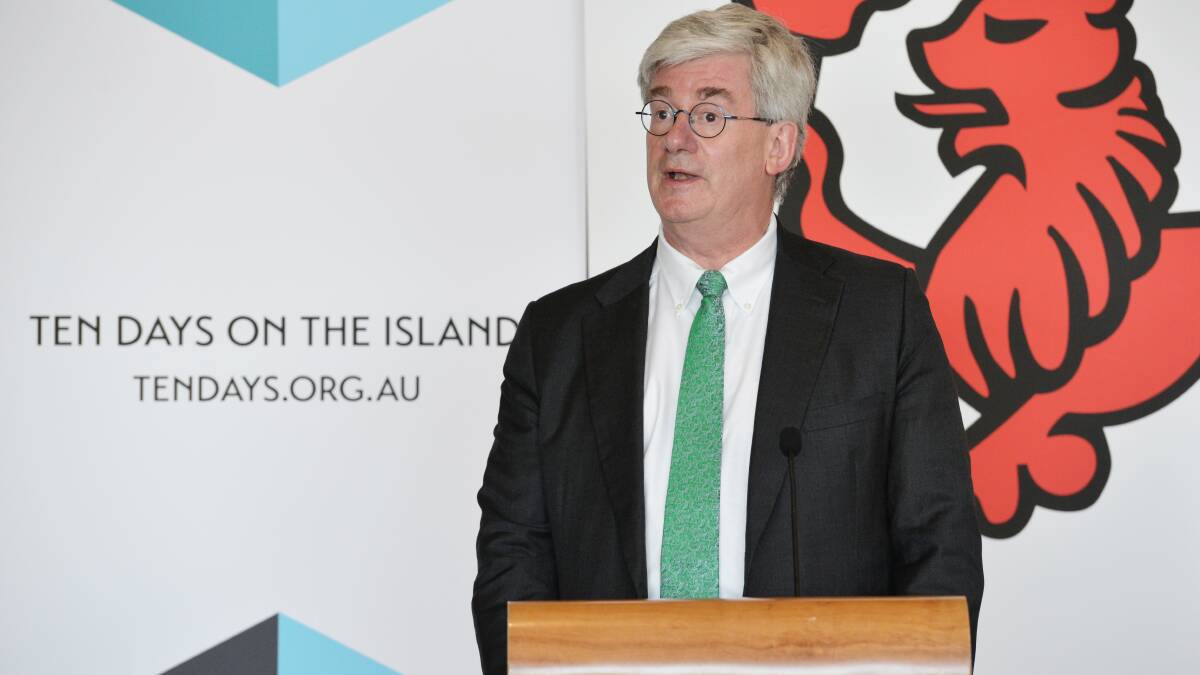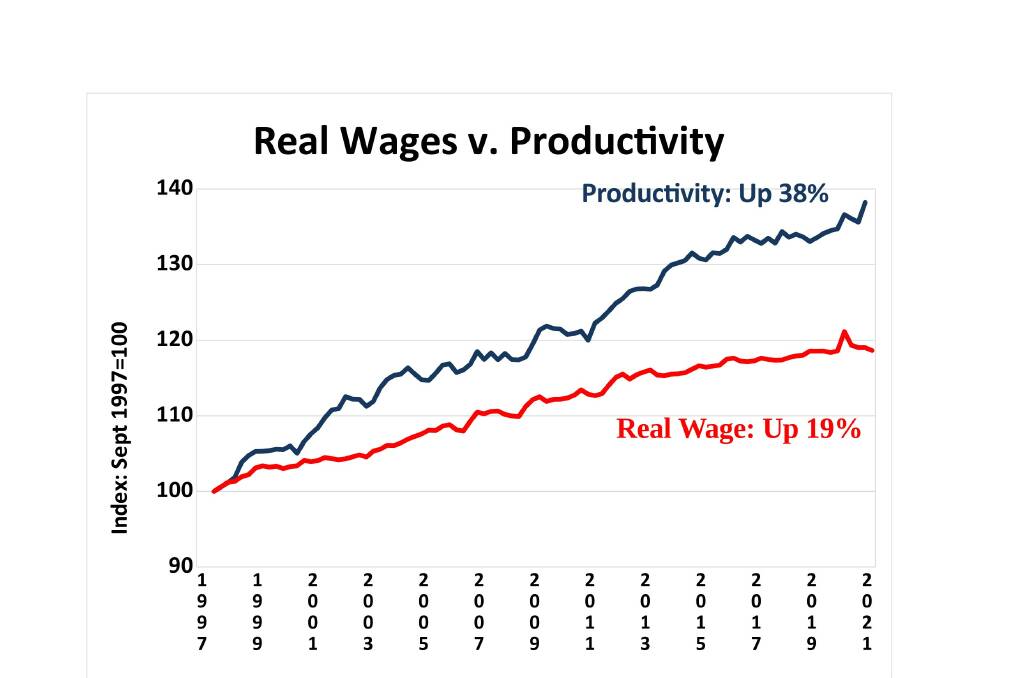
Tasmanian wages tend to be lower than mainland wages, and Tasmanian prices are rising faster than wages.
Subscribe now for unlimited access.
or signup to continue reading
How much can a working koala bear, and what's to be done?
Not surprisingly, there's a range of views and an even bigger range of questions.
Is it that Tasmanian workers are less efficient than mainland workers?
Are Tasmanian businesses less well run, on average?
Do we tend to have more low-wage industries?
Are freight costs a factor?
Do Tasmanian employers tend to pay lower wages simply because they can?
And so on
EDUCATION
He recently said Tasmanian labour productivity was about 10.5 per cent lower than the national average.
" ... the main reason why Tasmanian wages are lower than the rest of Australia is that for each hour that they work, Tasmanian workers produce on average $9.81 less by way of dollar value of goods and services than the Australian average," Mr Eslake said.
"That's partly because Tasmania has a below-average share of most of the intrinsically high-productivity (and high pay) industries like mining and financial services ...
"But it's also the case that almost 65 per cent of Tasmanian workers work in sectors where their productivity is below the national average for that sector.
"That may not necessarily be their fault.
"It could be inefficient management, for example, or small scale of operations."

However, he said the main cause of Tasmania's below-average productivity was its "appallingly low" levels of educational attainment.
"When we have a substantially higher proportion of the workforce with nothing beyond year 10 and a significantly below average proportion of the workforce with post-secondary qualifications, how on earth can we expect to have the same level of productivity in employment as the rest of the country, let alone a higher level?" he said.
SUSPICIOUS
Union leader Jessica Munday is very suspicious of the productivity argument as a reason for Tasmanian wages being lower, and the productivity argument more generally.
"The public discourse around worker productivity is often used as a stalking horse for the business community to pursue their ideological campaign for further change to our country's industrial laws," the Unions Tasmania secretary said.
"In short, they want workers to have less rights and conditions and they'll use the productivity argument to try to achieve that end.
"Changes to industrial relations laws won't deliver greater productivity.
"Any further reductions in rights or pay - like cuts to penalty rates - will just hurt already struggling workers and will certainly hinder any COVID recovery.

"Productivity is important, but the macro-solutions are more likely to bear fruit - that is, increased investment in education, training or new technology - than expecting to squeeze more out of individual workers.
'WHY WOULD THEY?'
Economist Dan Nahum, from the Australia Institute's Centre for Future Work, argues Australian productivity has been increasing faster than wages in real terms (with inflation subtracted) for some time.
He said the standard argument was employers would be able to give employees pay rises when productivity improved.
"We say, why would they?" Mr Nahum said.
"If workers are being asked to do more with less, why would employers respond by giving them a pay rise?
"There's no causal link there.

"I think it's a way to cajole workers to do more with less."
Mr Nahum said productivity was the amount of economic output for the amount of economic input.
"You can improve productivity through things like mechanisation, education and investing in better processes and practices," he said.
"Unfortunately, that's not where we are as a country right now," he said.
Mr Nahum said business investment had dropped off markedly and businesses were competing on wages rather than quality of products.
He said issues with education and training meant many people were unable to apply the qualifications the labour market needed, while improving how education and training interacted with workplaces and employers should be "very high on the list in terms of improving productivity".
He said more onshore value adding would help, and mechanisation itself was not a problem.

"We don't think the robots are coming to take workers' jobs," he said.
Rather, he hoped for an expansion of the economy off the back of more value adding.
"That's where we think we can get additional value and spending power and a more buoyant labor market and more buoyant wages," he said.
BELOW AVERAGE
Tasmanian average wages remain a long way below average wages in every other state and territory except South Australia, and are some way behind SA.
According to the Australian Bureau of Statistics, average weekly ordinary time earnings for adults working full-time (AWOTE) in Tasmania in May were $1520.70.
The national average was $1737.10.
The public service-dominated ACT had the highest average ($1908.60), followed by Western Australia with its large and well-paid mining workforce ($1879.70).
South Australia averaged $1569.90.
Women had lower AWOTE than men in every jurisdiction.
In Tasmania, the numbers were $1568.20 and $1436.90.
WAGES v LIVING COSTS
Meanwhile, the wages versus living costs numbers have turned against Tasmanian workers.
It is well known that wages growth nationally has been weak for some years.
The key equation for workers' living standards is how fast living costs are rising compared with how fast wages are rising.
There is little comfort on that in the latest ABS numbers.
The ABS wages price index - measuring changes in payments for the same work, rather than average wages - increased by 2.2 per cent in the year to June.
Hobart inflation - the best available measure for Tasmania - increased by 3.6 per cent in the same period.
Transport, housing and food were the biggest contributors to increasing costs in the June quarter.
State Treasury analysis said increased fuel costs caused much of the rise in transport costs, while fruit and vegetable pricing pushed up food costs,
"The increase in the housing component in the June quarter 2021 was mainly due to the continuing impact on new dwelling purchases as a result of the state and federal HomeBuilder grants," Treasury said.
Which appeared to be a rather Treasury-ish way of saying the grants drive up prices.














